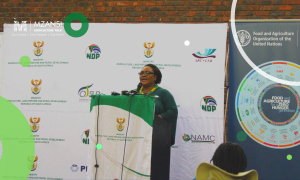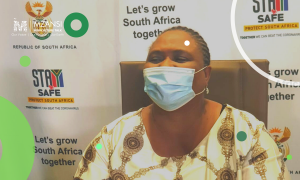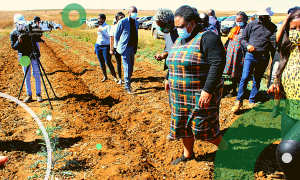As the first quarter of the twenty-first century draws to a close, South African economy remains stack in some economic dead zone.
Unless the latest outbreak of Human metapneumovirus (HMPV) in China makes its way onto our shores, triggering counter-cyclical fiscal stimulus as was the case with COVID19, economic prospects of 2025 will be no different from the ‘normal’ years of the recent past.
However, government has proven to be effective with counter-cyclical measures during periods of exogenous shocks (e.g. global financial crises and COVID-19) after which there is a reversion to draggy policies that only yield anaemic growth rates. But something positive is happening regarding private investment and the government is short-selling itself in the sea of negativity and despondency.
For the past five years, President Ramaphosa has been hosting South Africa Investment Conferences (SAICs) to encourage private investment. This year, the President will host the 6th edition targeting R2 trillion in private investment pledges. The President should be pleased that between 2021 (post COVID19) and 2023, cumulative private investment amounted to R332 billion. In 2023, private investment amounted to 17% of the gross domestic product (GDP), the highest it has been in years (see figure 1). Public investment, at 3,9% of the GDP and a significant distance from the National Development Plan (NDP) target of 10%, remains a drag on the economy.

It is however disappointing that increasing private investment has not led to rising employment. This is because South Africa is experiencing a global phenomenon of rising automation in work places, which is disruptive to the labour market. Companies are opting for automation to drive productivity and global competitiveness, unfortunately leading to labour displacements. The current global technology menu is full of automation technologies. Artificial Intelligence (AI) and algorithms will make matters worse.
Beyond tax incentives and concessionary funding schemes, government has limited influence on the choice of technologies by the private sector. Labour is also not flexible enough to the fast changing needs of the labour market. Alvin Toffler wrote in the ‘Future Shock’ that the critical skills of the future will be the ability to learn, unlearn and relearn. Flexibility through retraining however require financial resources, among others, which could be unavailable for many.
What insights therefore does jobless increase in private investment convey to government? What lessons can be taken on board as government pursue re-industrialization strategies? Should automation and robotic technologies continue receiving tax benefits?
Despite the above questions, it remains important to have a firm understanding of the drivers of private investment. Such understanding will allow for proper calibration of economic policies and programmes to unlock more targeted private investment. This article sets out to share key insights from a study conducted to estimate the private investment function for South Africa. Specifically, the article focuses on five determinants of private investment that have been found to be significant in the South African economy.
Crowding-in versus crowding-out effects of public investment
Crowding-out effect states that the presence of government in the capital market, as a borrower, deplete available savings for the private sector. Accordingly, entry of government increases competition with the private sector for limited available savings, driving up borrowing costs, crowding- out private sector and ultimately deterring private investment. This effect holds true for countries that lack monetary sovereignty or the so called currency users (eg. Eurozone countries).
Crowding-in effect, on the other hand, states that productive public investment is able crowd-in private investment. This holds for countries with higher form of monetary sovereignty or fiat currency issuers such as South Africa. Public investments in these countries do not have to be financed through borrowings but can be financed through the money bills of parliament. Indeed, the study found evidence of a strong crowding-in effect. It is therefore critical that the government increases public investment on key areas of infrastructure deficiencies (e.g. education, health, defence, transport as well as R&D).
Long term interest rates
Investment is long-term in nature and long-term interest rates are among key drivers of private investment. The theory of investment posits that there is a negative relationship between long-term interest rates and private investment. The results of the study confirm the theory, highlighting the significance of concessionary funding schemes of government (e.g. Manufacturing Competitiveness Enhancement Program (MCEP) and of late Blended Finance, among others). Benefiting from these schemes should however be linked to job creation.
As interest rates normalising at a lower level, President Ramaphosa may wish to consider providing matching funding commitments to the private pledges at the forthcoming SAIC. Such matching commitments can take the form of concessionary or blended finance to be provided through state- owned development finance institutions (DFIs).
Domestic savings rate
In a closed economy without trade and international capital flows, savings must equal investments but in a globally integrated open economy such as South Africa, the formula breaks down. This is because global savings are able to drift across borders to countries that offer better risk-adjusted returns. According to the 2024 DHL Global Connectedness Report, which measures global connectedness on trade, information, people and capital, South Africa is highest ranked country in Africa and 54th in the world.
Ability to tap into global savings pool must explain increasing private investment, post 1994, even as domestic savings were declining. Good news is that domestic savings bottomed out and have been since been increasing (see Figure 2). Global economy is also awash with savings searching for good investment destinations. In 2023, World Bank put global savings glut at US$28,6 trillion. South Africa needs to be dressed up to attract some of these global savings. Therefore, SAIC is one good platform to profile the country as a stable democracy worthy of foreign direct investment (FDI). The forthcoming G20 summit is another opportunity to put South Africa on the lists of global investors.

There is a downside to dependency on global savings for domestic investment. It increases risk of economic volatility as global savings are also driven by ‘animal spirits’ that can be spooked at short notice. Emerging economies, including South Africa, are exposed to risks of ‘capital flight’ during periods of risk aversion. Domestic savings are critical during ‘rainy days’ when global investors are averse to emerging and peripheral economies.
Domestic levels of uncertainty
Political, economic and social stabilities are among key determinants of private investment. South Africa is a stable democracy with gradualism in its reform agenda. But same cannot be said of the global economy characterised by heightened geopolitical tensions. Tariffs wars are escalating and the superpowers are blocking trade of high-end technologies such as chips and semiconductors. The historian, Yuval Harari, argues in ‘Nexus’ that the world has entered the era of ‘Silicon Curtains’ with the superpowers and their followers on either side of the curtains- an era similar of ‘Iron Curtains’ of the Cold War. South Africa will not be immune to the effects of rising levels of uncertainty but rising domestic savings provide some cushion.
Output gap
South Africa’s potential growth rate has been estimated 3 percent1. However, the economy recorded a growth rate of 5% in 2020 due to the counter-cyclical fiscal stimulus associated with COVID19. Output gap measures the difference between the actual and potential growth rates. The narrowing of the output gap implies improving market conditions. Historically, private sector responded to this signal through increasing private investment to capture emerging opportunities. The output gap is now widening but so far private investment is also increasing, which could be due to the lagged effects of the COVID19 stimulus spending but could also mean that SAICs have been effective in delivering to its stated aims.
In conclusion, private investment is increasing but new jobs remain elusive. In elevating the role of the private sector, government should realise that it is exposing the economy to increased risks of business fluctuations. Business cycles are due to bouts of over and under investments by the private sector. Government should therefore increase public investment, which has been found to crowd-in private investment, towards the 10 percent target. Unlike in the private sector, government has no pressure to choose automation technologies. It may also be time for the South African Revenue Services (SARS) to review tax incentives of capital items with a view to discourage wholesale automation of industries and services. Lastly, concessionary funding schemes of government should be linked to job creation.
1 Arora, V. and Bhundla, A. (2003) Potential output and the total factor productivity growth in post-apartheid South Africa. IMF Working Paper, (WP/03/178).
Disclaimer: The views expressed in this article is solely that of Independent Agricultural Economist Robert Matsila, and does not necessarily reflect the views of Mzansi Agriculture Talk, his employers, or other associated parties.




















